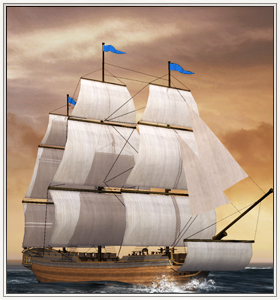Difference between revisions of "Indiaman (ETW Unit)"
m (→Factions) |
m (→Factions) |
||
| Line 34: | Line 34: | ||
*[[Image:Austria_FlagETW.png|25px]] [[Austria (ETW Faction)|Austria]] | *[[Image:Austria_FlagETW.png|25px]] [[Austria (ETW Faction)|Austria]] | ||
*[[Image:Bavaria_FlagETW.png|25px]] [[Bavaria (ETW Faction)|Bavaria]] | *[[Image:Bavaria_FlagETW.png|25px]] [[Bavaria (ETW Faction)|Bavaria]] | ||
| − | |||
*[[Image:Courland_FlagETW.png|25px]] [[Courland (ETW Faction)|Courland]] | *[[Image:Courland_FlagETW.png|25px]] [[Courland (ETW Faction)|Courland]] | ||
*[[Image:Denmark_FlagETW.png|25px]] [[Denmark (ETW Faction)|Denmark]] | *[[Image:Denmark_FlagETW.png|25px]] [[Denmark (ETW Faction)|Denmark]] | ||
| Line 40: | Line 39: | ||
*[[Image:Genoa_FlagETW.png|25px]] [[Genoa (ETW Faction)|Genoa]] | *[[Image:Genoa_FlagETW.png|25px]] [[Genoa (ETW Faction)|Genoa]] | ||
*[[Image:Georgia_FlagETW.png|25px]] [[Georgia (ETW Faction)|Georgia]] | *[[Image:Georgia_FlagETW.png|25px]] [[Georgia (ETW Faction)|Georgia]] | ||
| + | *[[Image:GranColombia_FlagETW.png|25px]] [[Gran Colombia (ETW Faction)|Gran Colombia]] | ||
*[[Image:Greece_FlagETW.png|25px]] [[Greece (ETW Faction)|Greece]] | *[[Image:Greece_FlagETW.png|25px]] [[Greece (ETW Faction)|Greece]] | ||
*[[Image:Hannover_FlagETW.png|25px]] [[Hannover (ETW Faction)|Hannover]] | *[[Image:Hannover_FlagETW.png|25px]] [[Hannover (ETW Faction)|Hannover]] | ||
Latest revision as of 07:27, 14 July 2020
![]() The Indiaman is an armed merchant ship, strongly built for the trade routes between Europe and the East. It is not a warship, but can defend itself in need.
The Indiaman is an armed merchant ship, strongly built for the trade routes between Europe and the East. It is not a warship, but can defend itself in need.
Overview
The Indiaman is a three-masted, square-rigged sailing ship of some 1000 tons displacement. Although work for the relatively small crew is hard, there are compensations: they can trade goods in their own right, and make excellent profits by doing so.
Unusually for a merchant ship, an Indiaman carries cargo, passengers, and a good number of guns. Intended to sail from Europe to the other side of the world and back carrying valuable – sometimes priceless – cargoes, these ships have to be able to defend themselves. The passengers expect some creature comforts, being both officers of the owning trade companies and assorted “gentlemen” seeking their fortunes in foreign parts.
Historically, East Indiamen resembled ships of the line, both in their general configuration and paintwork. At the Battle of Pulo Aura (1804), the ambiguous appearance and aggressive handling of a squadron of British Indiamen completely humbugged the French admiral, Charles-Alexandre Linois. He withdrew in the face of “superior” forces. Commodore Nathaniel Dance, of the British Company fleet, received a knighthood and a handsome reward for his cunning.
National navies purchased Indiamen and converted them into troopships or warships.
Details
Indiamen are capable of protecting themselves against smaller vessels. However, against larger vessels, Indiamen are at a severe disadvantage. They hold a slight speed bonus against larger ships, but their small armament makes it difficult for them to effectively offer a good fight. They are best suited to supporting other, larger units, which offer protection to the Indiamen.
Factions
 Great Britain
Great Britain United Provinces
United Provinces Austria
Austria Bavaria
Bavaria Courland
Courland Denmark
Denmark France
France Genoa
Genoa Georgia
Georgia Gran Colombia
Gran Colombia Greece
Greece Hannover
Hannover Hessen
Hessen Hungary
Hungary Ireland
Ireland Louisiana
Louisiana Mexico
Mexico Naples & Sicily
Naples & Sicily New Spain
New Spain Norway
Norway Italian States
Italian States Savoy
Savoy Poland-Lithuania
Poland-Lithuania Portugal
Portugal Prussia
Prussia Quebec
Quebec Russia
Russia Persia
Persia Saxony
Saxony Scotland
Scotland Spain
Spain Sweden
Sweden Thirteen Colonies
Thirteen Colonies United States
United States Venice
Venice Westphalia
Westphalia Württemberg
Württemberg
